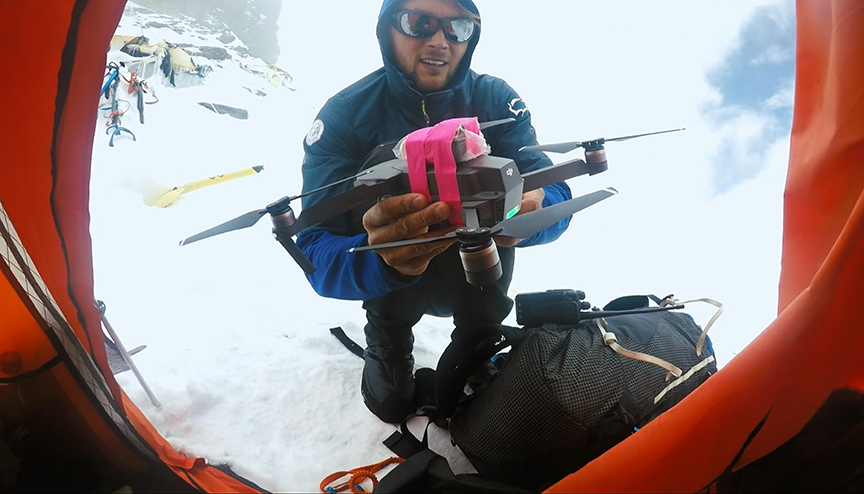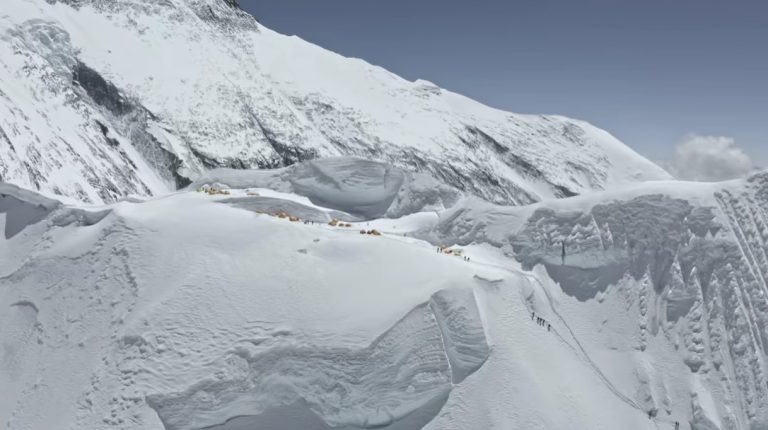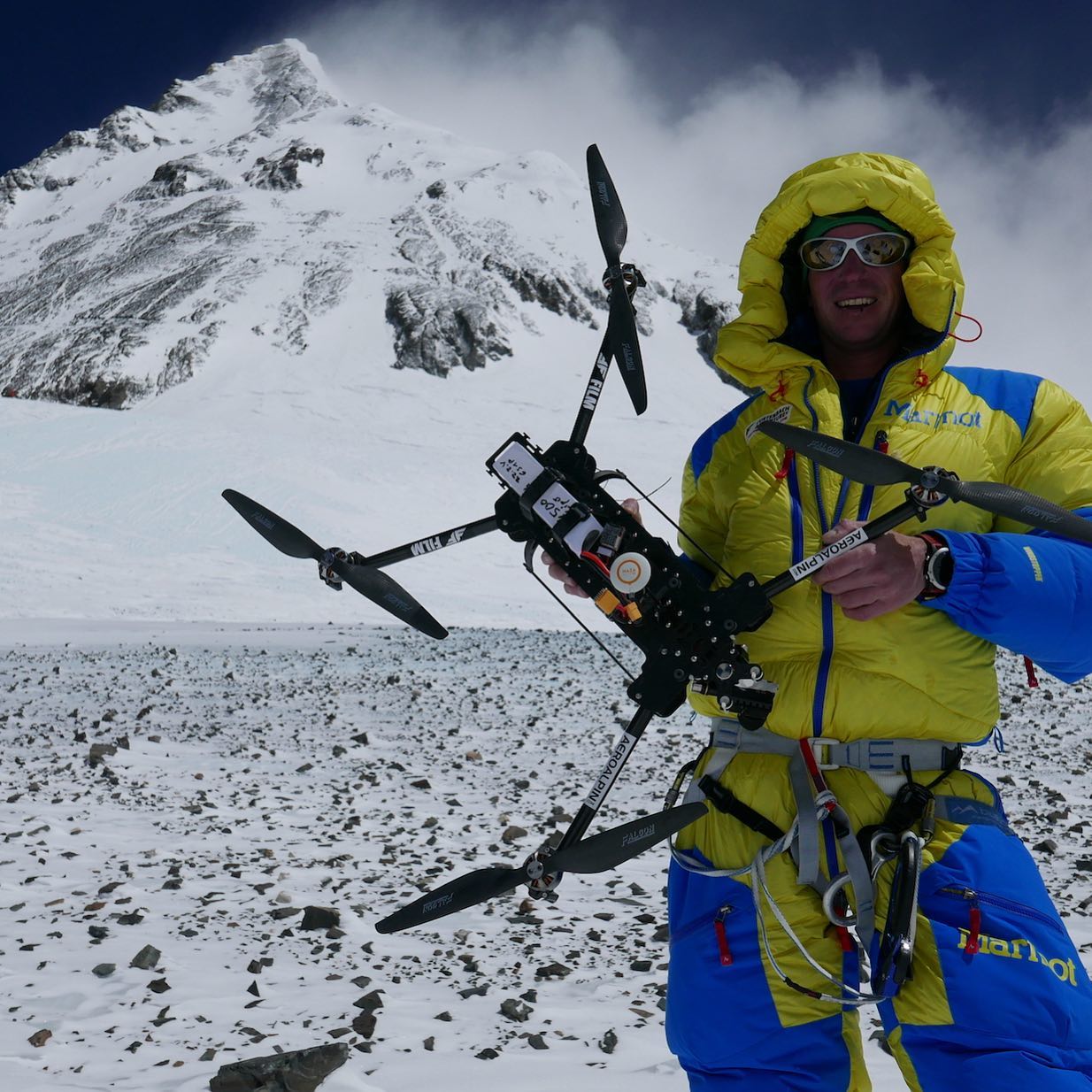Introduction
Over the past couple of years, drones have become as important a piece of climbing equipment as crampons and down suits. The growing need for professional climbers and would-be climbers to document their ascents has made them a vital tool. Now every mountain documentary relies heavily on these high-tech devices. For example, for the filming of the documentary " The Ghosts Above" director Renan Ozturk used such UAVs at unimaginable heights to film climbers climbing Mount Everest and the upper parts of the northern side.
Also, in addition to landscape photography and extreme shots, drones act as a primary tool for preliminary route awareness, which has helped in several successful rescue missions.
Rescue at Broad Peak and Nanga Parbat
We have already talked about this incredible rescue
With regard to K2, the Bargil brothers pursued their ambitions on one of the finest expeditions the Wild Mountain has ever seen. Three drones of Bartek filmed the ascent and descent - one of them even ascended to the very top. Since he did not have the strength to go down again, poor Andrzej had to put the drone in his backpack during his historic skiing. In order for drones to conquer such peaks, Bartek turned off electronic restrictions, which allowed them to fly at an altitude of 8000 meters, which, incidentally, is considered airspace for jet aircraft. In the climber's case, Bartek even adapted his Mavic Pro to deliver medication (see photo below).

A few months later, Alex Txikon and his team were airlifted to K2 on Nanga Parbat, where Daniele Nardi and Tom Ballard on the Mummery Spur, a very challenging route constantly covered in avalanches, as shown in the video below. Txikon also used the Mummery Spur's reconnaissance drones, but this time to no avail.
It is known that then Alex lost one of his drones, trivially due to a dead battery, as a result of which the drone irretrievably landed with a large error somewhere off the route. This case just underlines the main disadvantage of unmanned aerial vehicles in the highlands - their short flight time, since the batteries are very quickly discharged at altitude and in the cold.
Why didn't you manage to save the climbers on K2?
This was the main reason why the drones were not deployed during the search for the missing on K2 on 5 February. It would take powerful drones and very experienced pilots, explained Moira Ahmad (Sadpara Family spokesman) to ExplorersWeb. In any case, winter conditions would have prevented the drones from working properly. “The reason was not only freezing temperatures,” explained Moira Ahmad, “the rescue operation was complicated by strong winds, which prevented even helicopters from flying.”

Mountain clearance
In addition to technological restrictions on drones, local airspace regulations apply. The two aforementioned search operations, in which drones played a major role, took place in Pakistan, where climbers initially brought their UAVs for filming. In Pakistan, drone regulations have been relaxed as the devices are used only for recreation in isolated mountainous areas and, above all, away from military bases. The Pakistan Tourism Authority had no complaints regarding their use, however, it would be advisable to clarify in advance the possibility of launching UAVs with tour operators or in the Pakistan Civil Aviation Authority.
Launch of a drone in Lungden (4375 m) along the Everest route, 2014.
There are many more restrictions in Nepal. According to the Civil Aviation Authority, small drones (lighter than two kilograms) are usually not restricted by regulations, as long as they do not fly more than 120 meters above the ground and at a distance of 500 meters from the pilot. They should also avoid crowded, private and military areas. Those who intend to use larger models and fly more than 500 km - for example, when climbing large peaks - must obtain permission to photograph from various government agencies. Specialized websites such as UAV Coach note that even small drones need permission in certain areas, such as the Annapurna Conservation Area.
According to the travel forums, the permitting process takes at least three days and is best done in advance through forwarding agencies.
How about flying over Mount Everest?
However, even such agencies are struggling with rapidly changing rules as the popularity of drones grows rapidly. Lukas Furtenbach has used drones on several expeditions, including Everest over five years ago. “Since then, Nepal has changed the rules,” Furtenbach told ExplorersWeb. “Currently, the permit costs about $ 5,000, and drones are no longer allowed on the border with China, including in the Everest region!” This fact clearly explains the reason for the refusal to use UAVs by the teams of Alex Chikon and Jost Kobush in their winter expeditions to Mount Everest in early 2020.

Despite these difficulties, Lucas Furtenbach still hopes to expand the use of drones in the future.“We are currently working on a project to use heavy-duty unmanned aerial vehicles to deliver oxygen and other materials to high-altitude camps,” he said. "The idea is not to replace the Sherpas, but to make their work easier and safer."
What to prepare for this year?
For those hoping to use drones when returning to Nepal after COVID, Dawa Steven Sherpa of Asian Trekking offers an update: “They are not currently banned,” he told ExplorersWeb. “They are limited, but you can get permission for them. The problem is that the permit application process can take 45 days and cost up to $ 18,000 as there are nine different ministries and government departments involved. ” These ministries include: the Ministry of Information and Communications, the Ministry of Civil Aviation, Forestry, Interior and Defense, the Ministry of Archeology, the Ministry of National Parks, the Cinematography Development Authority and the Civil Aviation Authority.
“If you know how to navigate this, then you can get permission,” added Dawa Stephen. "It's a normal part of my job, but it's a big pain in the ass and takes two to three hours a day for one full-time employee for 45 days."
On attempting to smuggle in a drone
As for attempting to smuggle a drone hidden in your personal bag, think twice! “On expeditions, you will be checked by military communications and the SPCC (Sagarmatha Pollution Control Committee),” said Dawa Stephen. “In the villages, you will also be checked by the Nepal police, demanding to show the drone and permission to shoot. Foresters, scouts and even the army will also join them. Therefore, we have little chance of avoiding punishment for unrecorded flights over Everest. "
That's all for us. If you have something to say on the topic, leave your comments below. And stay with us! To keep abreast of all the latest news about the best drones, rumors, announcements and reviews, and also follow us in our VK group. Fly Safely!
.






